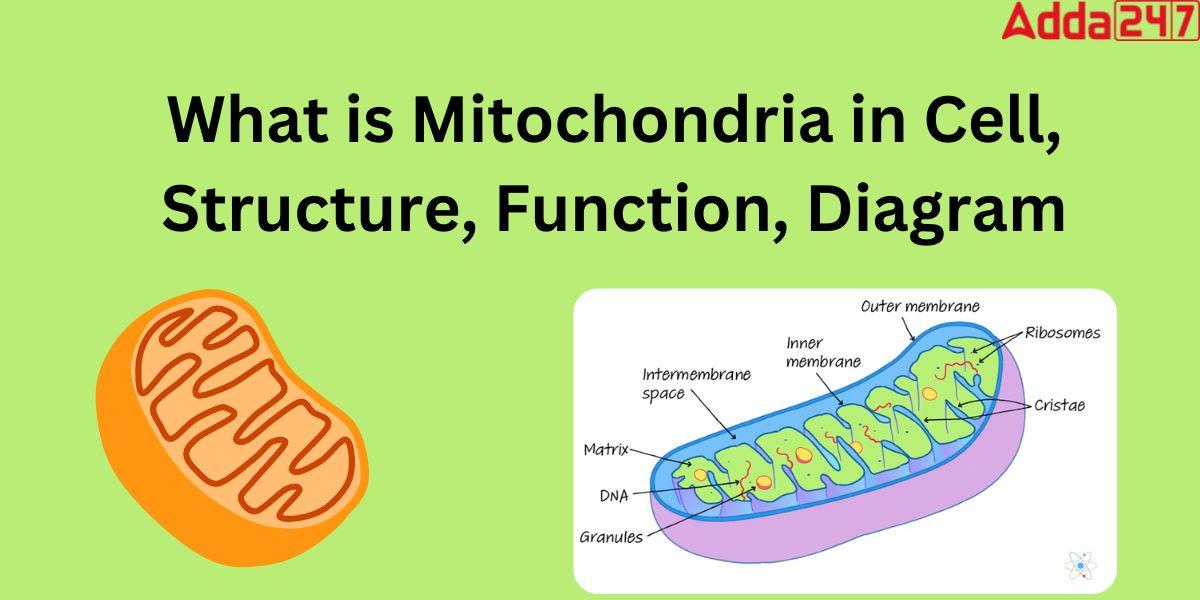Table of Contents
Mitochondria are normally referred to as the “powerhouses” of cells because they are responsible for producing the majority of the energy needed for cellular processes. These organelles are found in most eukaryotic cells and play a crucial role in many biological functions.
Mitochondria
However, mitochondria are not just simple structures that generate energy. They are complex organelles with multiple components, each with its own unique functions and characteristics. In this article, we will provide you with information about the different components of mitochondria and how they work together to support cellular energy production and other important cellular functions.
Mitochondria in Cell Meaning
The Greek words “mitos” and “chondria,” which mean “thread” and “granules-like,” respectively, are where the word “mitochondria” originates. In 1890, German pathologist Richard Altmann wrote the first account of it.
These are present in every eukaryotic cell and helps as an important organelles for cellular respiration. They are essential for the synthesis of ATP, the main source of energy for cells. Although small in size, these vital structures facilitate various fundamental functions within cells such as signaling pathways and metabolic reactions.
The mitochondria have a major function in breaking down nourishment and producing substances that supply vigor to the cell. Multiple metabolic operations essential for cellular respiration happen inside these organelles, rendering them an area of intense concentration among scholars investigating genetics, medicine and cell biology.
Must Check Difference Between Plant cell and Animal cell with Diagram
What are Mitochondria?
Mitochondria are double membrane-bound organelles also known as the “Powerhouse of the Cell,”. They help in the “digestive system” of the cell and are found inside the cytoplasm.
Liver and muscle cells may contain hundreds or even thousands of mitochondria but on the other hand these are absent in human red blood cells. The family of oxymonads only eukaryotic organism without mitochondria is Monocercomonoides.
In contrast to other cellular organelles, mitochondria contain a distinct genome, two distinct membranes, and use binary fission for reproduction, suggesting that they may have originated from prokaryotes (single-celled organisms).
The cell nucleus is the place where the most of the proteins and other compounds found in mitochondria are made. Yet, the human mitochondrial genome only has 37 genes, 13 of which make different parts of the electron transport chain (ETC).
Amoeba: Cell, Diagram, Classification, Nutrition
Characteristics of Mitochondria
- In both plant and animal cells, the mitochondrion is a double-membraned, rod-shaped structure.
- An inner membrane, an outer membrane, and something called the matrix make up the structure.
- There is a discrepancy between the membranes that surround and encase an object. These layers are composed of various tiers, incorporating both phospholipids in conjunction with proteins.
- Many distinct proteins known as porins make up the outer membrane of the mitochondrion, which covers its surface.
Do you Know the Largest Cell in the Human Body?
Mitochondria Structure
An inter-membrane gap separates the mitochondria’s inner and outer membranes. Ions can enter and leave the mitochondria thanks to a class of proteins called porins. Enzymes required for the oxidation of adrenaline and elongation of fatty acids is also present in the outer membrane.
The Krebs (TCA) and fatty acid cycle enzymes, along with DNA, RNA, ribosomes, and calcium granules, are found in the matrix, a region inside the mitochondria’s inner membrane.
Many different enzymes can be found in the inner membrane. It has transport proteins that control the flow of metabolites into and out of the matrix as well as ATP synthase, which produces ATP in the matrix.
In order to enhance the surface area accessible for oxidative phosphorylation—the process that produces energy—the inner membrane is organized into cristae.
What Is This Cristae?
The structure of the mitochondria’s inner membrane is quite intricate. It has several folds that come together to produce cristae, a layered structure that contributes to the organelle’s increased surface area.
The inner membrane’s cristae and proteins support the synthesis of ATP molecules. Only oxygen and ATP molecules are strictly permitted to pass through the inner mitochondrial membrane. The inner membrane of mitochondria houses a variety of chemical processes.
Parenchyma- Cells, Tissue, Meaning, Function, and Diagram
Mitochondria Diagram
Diagram of Mitochondria is fully explained below. Check Mitochondria Diagram

Mitochondria is the powerhouse of the cell
Earlier we came to know that the power house of the Cell is known as mitochondria. Small molecules can freely pass through the outer mitochondrial membrane, which also has specialized channels that can carry big molecules. The inner membrane, on the other hand, is much less permeable, allowing only extremely small molecules to access the gel-like matrix that forms the core bulk of the organelle.
After this a metabolic process known as tricarboxylic acid cycle occurs. This complicated reaction has an important role that leads to energy production from broken-down macronutrients in the mitochondria. Besides this critical function, it also incorporates mitochondrial genome DNA as one aspect into its operation.
The inner membrane of cells is bent into folds called cristae that house the protein components of the ETC, which is the primary energy-generating system in cells. These folds are where the processes that turn these by-products into energy take place.
A series of oxidation-reduction events carried out by the ETC transport electrons between different protein building units. Following this mechanism’s production of free energy, ADP (adenosine diphosphate) is phosphorylated to form ATP.
Nearly all cellular processes, including those that drive the contraction of muscles and fuel brain activity, are propelled by this procedure, known as chemiosmotic coupling of oxidative phosphorylation.
Paramecium Diagram, kingdom, Classification, Locomotion, Size
Mitochondria Function
The generation and production of energy through the oxidative phosphorylation is known as the mitochondria’s most significant function. Moreover, it contributes to the following process:
Function of Mitochondria Class 9
- Controls the cell’s metabolic activities.
- Promotes the formation of new cells and cell division
- Helps in the ammonia detoxification of liver cells
- Significantly contributes to apoptosis, or programmed cell death
- Responsible for producing several hormones like testosterone and oestrogen as well as specific blood components
- Aids in the maintenance of an adequate concentration of calcium ions inside the cell’s compartments.
- It is actively involved in a plethora of intricate cellular functions, including signalling, differentiation and cell division. Additionally, it manages the progression of cell growth stages.
Diseases Linked to Mitochondria
Mitochondrial DNA is more exposed to mutations since it does not have a good DNA repair mechanism which is found in nuclear DNA. Although some ROS can damage mtDNA, the mitochondria have a range of antioxidant proteins that scavenge and deactivate these radicals.
Human health can be directly impacted by any abnormality in mitochondrial activity, although it is frequently challenging to diagnose because symptoms vary from person to person. Mitochondrial illnesses are frequently very severe and may ultimately lead to organ malfunction or shutdown. Alpers disease, Barth syndrome, and Kearns-Sayre syndrome are all mitochondrial disorders (KSS)
Related Posts:




 Bihar Board 12th Result 2025 Out @ inter...
Bihar Board 12th Result 2025 Out @ inter...
 [Live Update] NTA CUET PG Answer Key 202...
[Live Update] NTA CUET PG Answer Key 202...
 UPMSP Result 2025, यूपी बो�...
UPMSP Result 2025, यूपी बो�...










